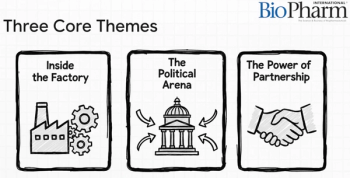
FDA Approves Moderna’s Updated COVID-19 Vaccines Targeting LP.8.1 Variant
Key Takeaways
- FDA approved Moderna's updated COVID-19 vaccines targeting LP.8.1 for the 2025–2026 season, focusing on specific age and risk groups.
- The new approvals reflect a shift towards targeted public health interventions, similar to seasonal influenza vaccine strategies.
Moderna’s updated Spikevax and mNEXSPIKE COVID-19 vaccines target the LP.8.1 variant of SARS-CoV-2 for high-risk groups and older adults.
FDA has approved the supplemental biologics license applications for new formulas of Moderna’s Spikevax and mNEXSPIKE COVID-19 vaccines for the 2025–2026 respiratory virus season, Moderna announced on Aug. 27, 2025. The new formulas target the LP.8.1 variant of SARS-CoV-2 to help prevent COVID-19 (1), following agency guidance that next-season formulations should be based on the JN.1 lineage, with LP.8.1 as the preferred strain.
The decision provides additional tools for clinicians and public health systems as they prepare for another season of COVID-19 management, where at-risk populations remain vulnerable to severe outcomes. With approval now secured, the updated vaccines are expected to be distributed in the United States within days, according to Moderna.
“Protecting people at increased risk of severe outcomes from COVID-19 is imperative to public health as COVID-19 was responsible for up to 4 million outpatient visits and nearly half of a million hospitalizations last year,” said Stéphane Bancel, CEO, Moderna, in a company press release (1). “We are proud to help ensure Americans will have the latest protection against currently circulating strains this respiratory virus season.”
What are the age and risk group approvals for Spikevax and mNEXSPIKE?
The two vaccines have slightly different indications based on age and risk profile. Spikevax is approved for individuals from six months through 64 years old who have at least one underlying condition that increases the likelihood of severe COVID-19, and for all adults aged 65 and older. mNEXSPIKE, Moderna’s newer COVID-19 vaccine, is approved for individuals aged 12 through 64 years with at least one high-risk condition, as well as for adults 65 years and older.
This narrower framing contrasts with earlier FDA COVID-19 vaccine authorizations, such as the initial approvals of mRNA vaccines in 2020 and 2021, which permitted broad administration to nearly all adults without requiring proof of a high-risk condition, and were subsequently expanded to adolescents and children as safety and efficacy data accumulated. By comparison, these latest indications for Moderna’s products resemble the regulatory path for seasonal influenza vaccines, where approval is technically universal but health agencies often prioritize older adults and people with comorbidities because of elevated risk. This shift suggests that FDA now views COVID-19 vaccination as a more targeted public health intervention rather than a universal one, with the indication aligning closer to the established model for respiratory vaccines such as flu and respiratory syncytial virus (2).
As with other seasonal vaccines, the agency emphasizes that neither Spikevax nor mNEXSPIKE can guarantee protection for all recipients, underscoring a balance between individual-level benefit and population-level impact.
These current approvals for Spikevax and mNEXSPIKE align with global regulatory action already taken in other regions. Health authorities in Canada, Europe, Japan, and Switzerland have granted authorization for updated formulations targeting LP.8.1, with additional applications under review in multiple countries. The international coordination reflects growing reliance on variant-specific updates to sustain vaccine effectiveness as the virus continues to evolve (3).
What are the implications for vaccine manufacturing and development?
This development underscores how regulatory and manufacturing frameworks for COVID-19 vaccines now resemble seasonal influenza models, with regularly updated compositions. The rapid approval and anticipated distribution highlight the efficiency gains in manufacturing scale-up and regulatory processes since the early stages of the pandemic.
The incorporation of LP.8.1 as the target strain required swift adaptation of messenger RNA vaccine production pipelines, which depend on sequence-based design rather than traditional viral culture. This adaptability has reinforced the role of messenger RNA as a platform that can accelerate development timelines and support large-scale global supply (4).
The updated approvals also signal ongoing demand for specialized formulations for different demographic and clinical subgroups. By tailoring vaccines for high-risk populations, manufacturers must sustain flexible production strategies capable of responding not only to viral shifts but also to evolving public health priorities.
References
1. Moderna.
2. Ernst, D. FDA’s New COVID-19 Vaccine Approval Policy May Limit Future Access. thecardiologyadvisor.com, May 27, 2025.
3. Alhamlan, F. S.; Al-Qahtani, A. A. SARS-CoV-2 Variants: Genetic Insights, Epidemiological Tracking, and Implications for Vaccine Strategies. Int. J. Mol. Sci. 2025, 26 (3), 1263. DOI:
4. Iqbal, S. M.; Rosen, A. M.; Edwards, D.; et al. Opportunities and Challenges to Implementing mRNA-Based Vaccines and Medicines: Lessons from COVID-19. Front. Public Health 2024, 12. DOI:
Newsletter
Stay at the forefront of biopharmaceutical innovation—subscribe to BioPharm International for expert insights on drug development, manufacturing, compliance, and more.




